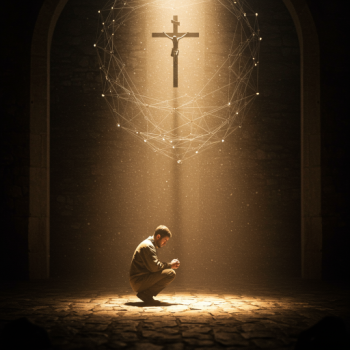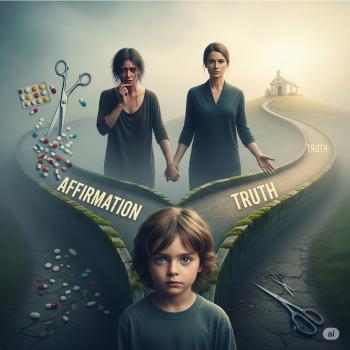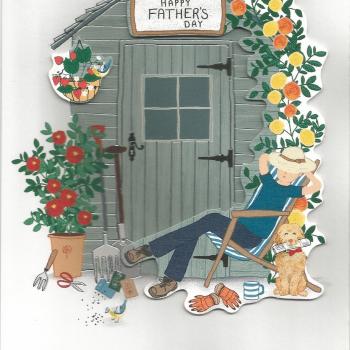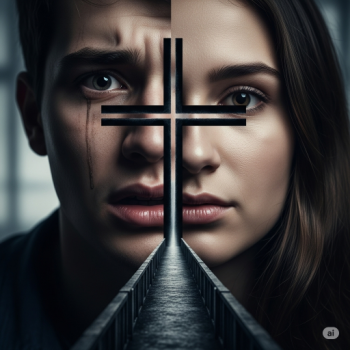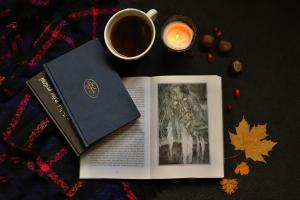 Is there a greater work of fiction than The Lord of the Rings? Its epic scale and thematic grandeur make it exist on a level unto itself. Peter Jackson’s cinematic adaption, with its billions of dollars earned and a myriad of awards received, confirms the timelessness of this work. Why the universal appeal? The answer is simple, it is a Catholic work.
Is there a greater work of fiction than The Lord of the Rings? Its epic scale and thematic grandeur make it exist on a level unto itself. Peter Jackson’s cinematic adaption, with its billions of dollars earned and a myriad of awards received, confirms the timelessness of this work. Why the universal appeal? The answer is simple, it is a Catholic work.
A Catholic Work
The Lord of the Rings was written by the devout Roman Catholic, JRR Tolkien. The Lord of the Rings is a Catholic work. Tolkien admitted the work was Catholic in a 1953 letter to Father Robert Murry.
He states:
The Lord of the Rings is of course a fundamentally religious and Catholic work; unconsciously so at first, but consciously in the revision.
The universally Christian themes in the book show through clearly in the death and resurrection of Gandalf, the imagery of the humble servant’s willingness to sacrifice for the greater good (Frodo, who was willing to die in the unmaking of the Ring), and the good king, Aragorn, assuming the throne after traversing the Paths of the Dead. The singularly Catholic themes in the work, often missed by the casual reader, I explore below.
The Catholic Lady Galadriel
On two chairs beneath the bole of the tree and canopied by a living bough there sat, side by side, Celeborn and Galadriel. They stood up to greet their guests, after the manner of the Elves, even those who were accounted mighty kings. Very tall they were, and the Lady no less tall than the Lord; and they were grave and beautiful. They were clad wholly in white; and the hair of the Lady was of deep gold, and the hair of the Lord Celeborn was of silver long and bright; but no sign of age was upon them, unless it were in the depths of their eyes; for these were keen as lances in the starlight, and yet profound, the wells of deep memory.
–The Fellowship of the Rings, “The Mirror of Galadriel”
In the same letter, Tolkien confirms Father Murry’s suspicion that Galadriel is an image of the Virgin Mary. Again, he says,
I think I know exactly what you mean by the order of Grace; and of course your reference to Our Lady, upon which all my own small perception of beauty both in majesty and simplicity is founded.
Regarding the imagery of Mary in Galadriel, in a letter wrote in 1958 to a Deborah Webster, Tolkien refers to a critic who wrote him a letter and asserted that the invocation of Elbereth, and the character of Galadriel as directly described (or through the words of Gimli and Sam), were clearly related to Catholic devotion to Mary.
And in a letter to Mrs. Ruth Austin in 1971, Tolkien comes out and admits the influence of Mary on Galadriel, but only to a point. In The Lord of the Rings, she is an exile who desires to return to the Undying Lands across the sea.
I think it is true that I owe much of this character to Christian and Catholic teaching and imagination about Mary, but actually Galadriel was a penitent: in her youth a leader in the rebellion against the Valar (the angelic guardians).
Lembas Bread for the Journey
Eat little at a time, and only at need. For these things are given to serve you when all else fails. The cakes will keep sweet for many many days, if they are unbroken and left in their leaf-wrappings, as we have brought them. One will keep a traveler on his feet for a day of long labour, even if he be one of the tall Men of Minas Tirith.
–The Fellowship of the Ring, “Farewell to Lorien”
In a letter to Forrest J. Ackerman in 1958 regarding a film treatment of The Lord of the Rings, Tolkien remarks on lembas’ religious importance:
In the book lembas has two functions. It is a ‘machine’ or device for making credible the long marches with little provision, in a world in which as I have said ‘miles and miles’. But that is relatively unimportant. It also has a much larger significance, of what one might hesitatingly call a ‘religious’ kind.
Furthermore, in the letter to Deborah Webster, Tolkien comments on another critic that saw the Catholic origin of the bread of the elves.
Another saw in the waybread (lembas) = viaticum and the reference to its feeding the will (vol. III, p. 213) and being more potent when fasting, a derivative from the Eucharist.
A Eucatastrophic World
Moreover, Tolkien, the philologist, created the word eucatastrophe by combining the Catholic word eucharist, which means thanksgiving, with the word catastrophe (a disaster) to form a new word that means the joy of a happy ending, or a good catastrophe.
Tolkien states in On Fairy Stories:
I would venture to say that approaching the Christian Story from this direction, it has long been my feeling (a joyous feeling) that God redeemed the corrupt making-creatures, men, in a way fitting to this aspect, as to others, of their strange nature. The Gospels contain a fairy-story, or a story of a larger kind which embraces all the essence of fairy-stories. They contain many marvels- peculiarly artistic, beautiful, and moving: “mythical” in their perfect, self-contained significance; and among the marvels is the greatest and most complete conceivable
Eucatastrophe. But this story has entered History and the primary world; the desire and aspiration of sub-creation has been raised to the fulfillment of Creation. The Birth of Christ is the Eucatastrophe of Man’s history. The Resurrection is the Eucatastrophe of the story of the Incarnation. This story begins and ends in joy. It has pre-eminently the “inner consistency of reality.” There is no tale ever told that men would rather find was true, and none which so many skeptical men have accepted as true on its own merits. For the Art of it has the supremely convincing tone of Primary Art, that is, of Creation. To reject it leads either to sadness or to wrath
Please forgive the extra long quote, but the point Tolkien makes is paramount to understand the Catholic essence of The Lord of the Rings. “The Christian Story” ends with the resurrection of Jesus and, thus, a catastrophic defeat is turned into victory. This historical event, which happened in time and space, all men would hope were true. So, too with The Lord of the Rings. This work of fiction, while not allegorical, contains elements of realism that continue to resonate with readers to this day. The real portrayal of suffering, fellowship, and sacrificial love touch the deep places of the human heart.
A Catholic Work Revisited
Clearly, given all the evidence provided (and Tolkien’s own words), The Lord of the Rings is a Catholic work. From Tolkien’s imagery of the Lady Galadriel, the eucharistic power of lembas bread, to the whole story as a reflection of eucatastrophe, this tale instructs the reader in the Catholic faith. Now, those who read this tale may not pick up on these themes right away, but they are present in every word, line, and paragraph.
Like what you read? Please check out my other writing here.
Please like and follow me on Facebook.



